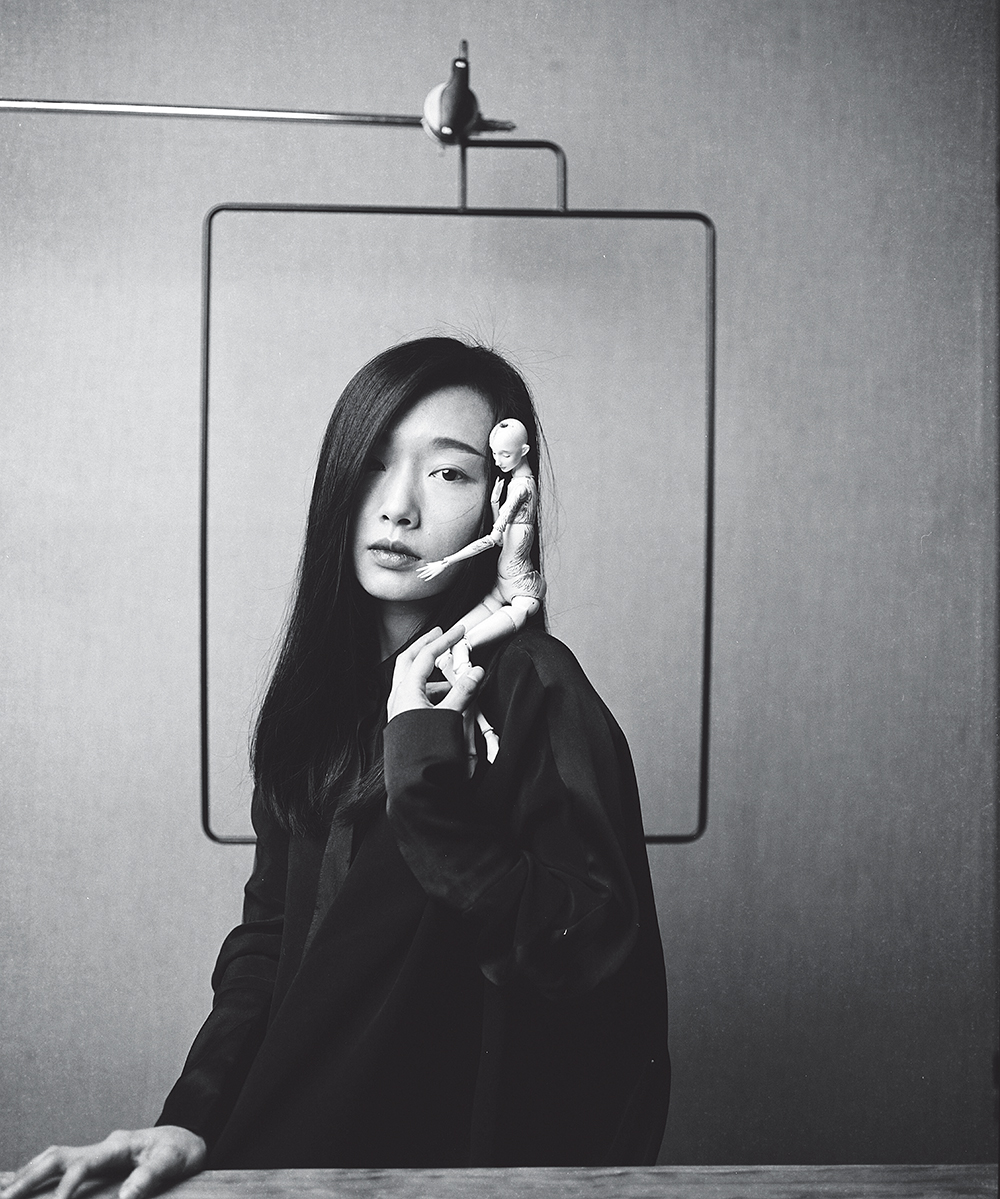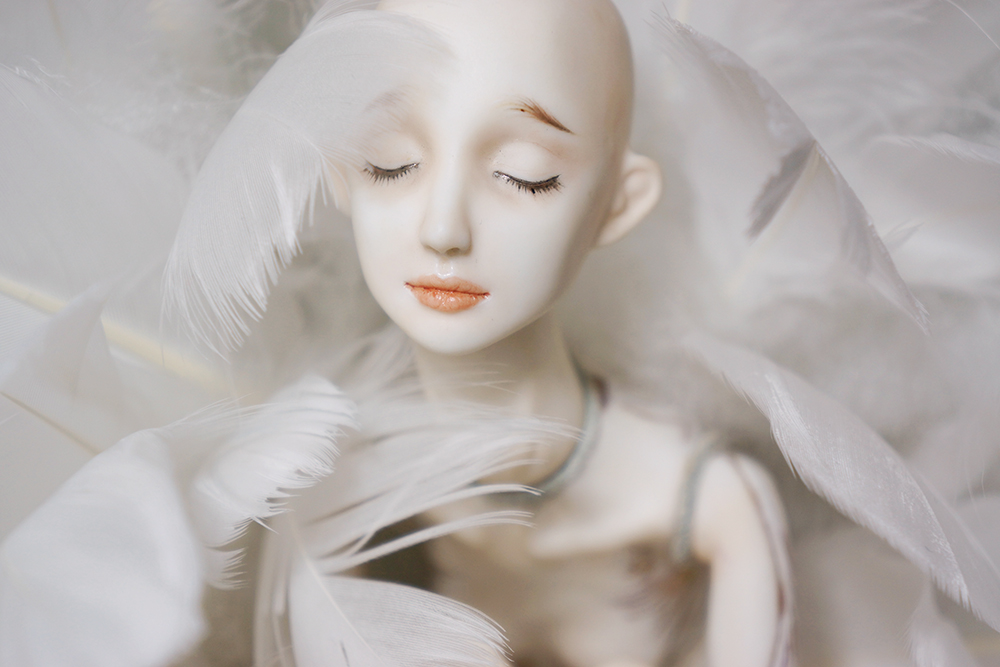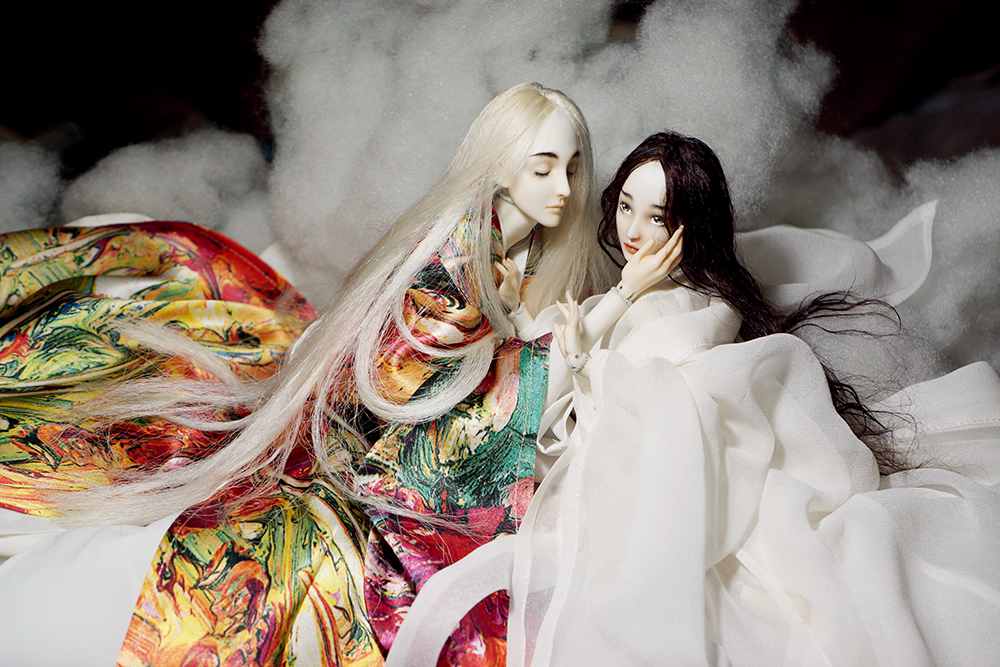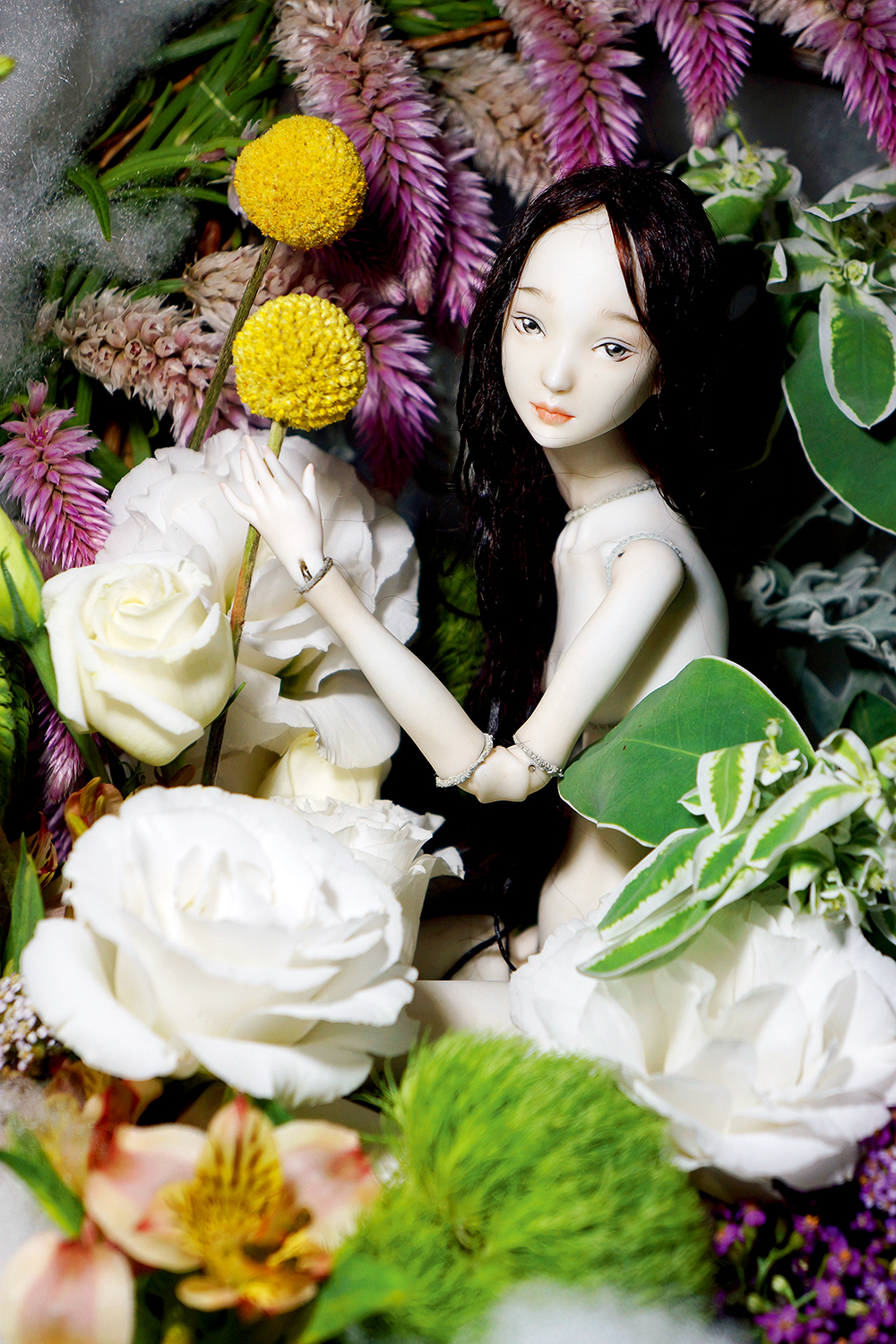
Hu Yanying
Ceramic dolls, with delicately made faces, bodies and moving joints, look like fairies with white, clean and smooth skin. The dolls, all handmade by a woman artist, named Hu Yanying, showcase exquisite details, such as nicely polished nails on the fingers and toes. Hu considers each doll a beautiful "fairy" with its own thoughts about this world.
Hu Yanying was born in 1983 in East China's Jiangxi Province. She has a bachelor's degree from the Chinese department of Renmin University of China, and she has a master's degree in documentary photography from London College of Communication. Since 2012, she has been using ceramics to make BJD, or ball-jointed doll.
Ceramic items, which are white, smooth and fragile, remind people of the traits of a beautiful woman's figure. People who make ceramic dolls must grasp various skills — including drawing and painting, carving, metal processing and, sometimes, fashion and jewelry design — to produce excellent works of art.
Before Hu began making ceramic dolls, when she was 29, she had changed jobs several times. She used to work for a bank, an entertainment company and a publishing house. During those years, she came to realize that she was most comfortable when she was alone. Rather than communicating with others, she preferred to find other ways to express her feelings.
In 2006, Hu saw a BJD brand, Enchanted Doll, established by artist Marina Bychkova. Hu was impressed by the foreign artist's skill, especially with her ability to turn ceramics into elegant-looking dolls with movable joints. She visited Jingdezhen, near her hometown in Jiangxi Province.
She showed pictures of products by Enchanted Doll to potters in the porcelain plants, and she asked if any of them could replicate the items. All of the potters turned her down, and they told her it would be too time-consuming to make ceramic dolls. Hu refused to give up. She spent two months learning how to shape the clay as the wheel turned. She often climbed onto a low wall in the workshop, so she could watch the beautiful sunset after she completed her work for the day.
Why did Hu choose ceramic as the main material to make ball-jointed dolls? "Ceramic is a durable material that resists corrosion caused by ultraviolet rays and/or changes of temperature and humidity. The colors painted on ceramic do not fade easily. The layers of various colors, painted on a ceramic doll, resemble a 'coat' that protects the doll's surface," Hu explains. She adds cashmere cloth on the movable joints to reduce damage to the ceramic.
Hu likes to paint tattoos on her dolls. She paints patterns, such as a carp, crane, pine branch or a script on the dolls. On the back of one of her dolls, Hu wrote the Chinese words that translate to, "People are like puppets filled with their souls when they are living in the world. Once a person is apart from his/her spirit, his/her body will be like a puppet without the wires pulling it to move."
Hu says making crafts will help a person become stable, honest and persistent. For craftsmen and craftswomen who work with clay, it is important they truly understand the texture of the clay, and that they know how to shape the clay and make it into pottery that expresses their artistic tastes.
"The ceramic dolls I make are like 'fairies' that contain part of my soul, which I have passed to them. I hope each doll is unique in this world. I seldom design the dolls' facial expressions before I paint their faces. I follow my heart and paint the expression I think is most suitable for each doll," Hu says.
 A ceramic doll
A ceramic doll

Two ceramic dolls
 A ceramic doll
A ceramic doll

